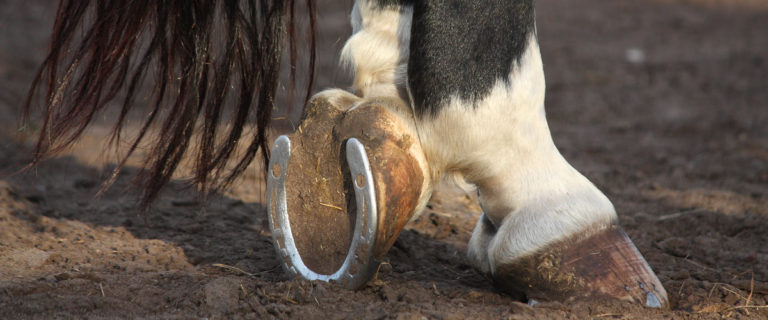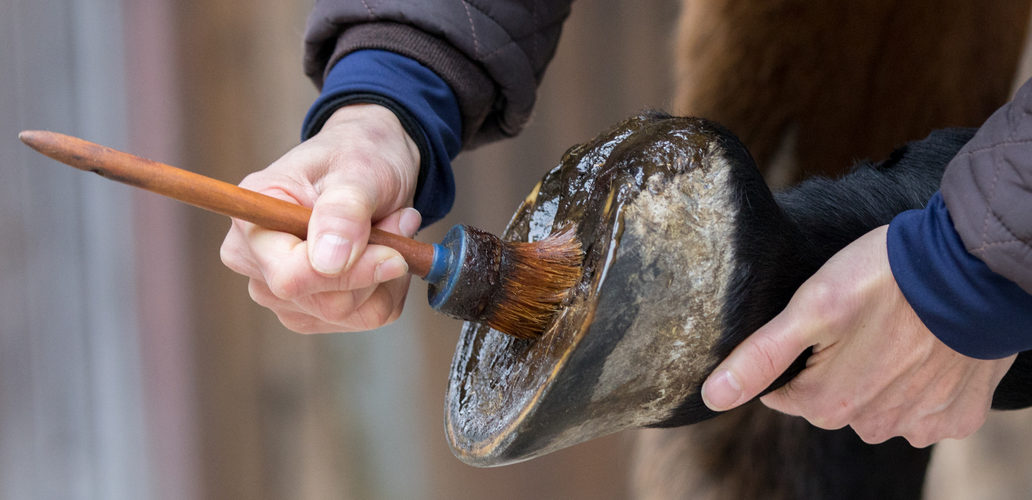This time of year is hard on hooves; the threat of thrush is constantly looming. It’s important to examine your horses for any sign of the bacteria or fungus that causes deterioration of the hoof, specifically around the frog.
Identifying
The easiest way to identify thrush is a smell. Thrush is very potent and has an unmistakable strong smell. A mild case of thrush can also be characterized by some dark discoloration as well as dark grime around the frog. The clefts of the frog tend to show signs first. If thrush goes untreated there will be signs of the infection in the heel of the infected hoof as well. Thrush is painful so be mindful of that when handling your horse. If you wait too long to start treating the issue your horse could start showing signs of lameness.
Treatment
When a horse develops thrush the first thing you should do is keep the hoof as clean and dry as possible. You can use any thrush product you can find at your local tack store to help heal the hoof and kill the bacteria. Always follow the directions for use for any products you use on your horse. Daily cleaning of the hoof may be necessary to ensure the fastest recovery for the horse.
Prevention
Thrush is hard to prevent, there are many different causes for it and not all of those causes are as straightforward as you would think. The most often cause of thrush is moisture, the hoof being in a wet environment, constantly packed with mud is a common way for your horse to contract thrush. Daily cleaning of the hoof is a great way to prevent thrush, especially in wet climates. If you find that your horse is in a dry environment and starts developing recurring thrush there are a few things to consider to be rid of the thrush once and for all. Horses who spend more time in a pasture tend to have less issues with thrush since walking around allows better circulation in the hooves. It’s also important to consult your vet and farrier if you notice recurring thrush as there could be underlying issues with farrier work or nutritional gaps in your horse’s diet.
Hopefully with the right environment, correct farrier work, and balanced nutrition you and your horse won’t have to deal with thrush as often and keep your horse in tip top shape!


